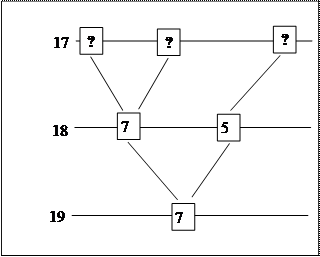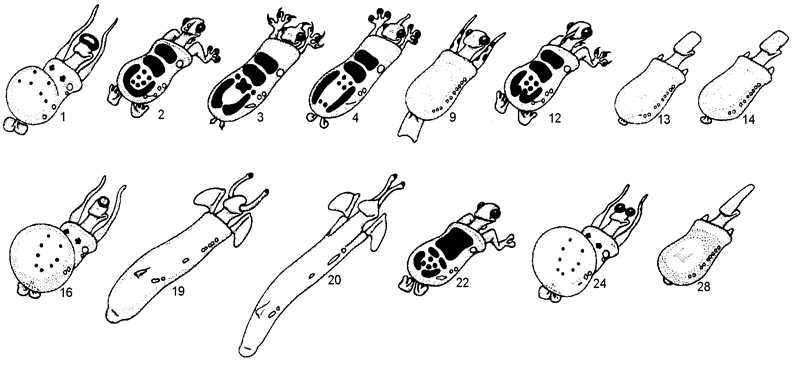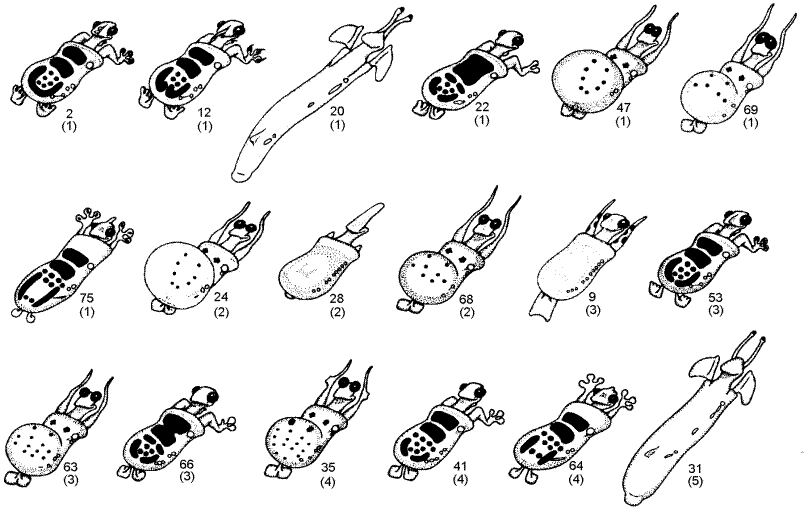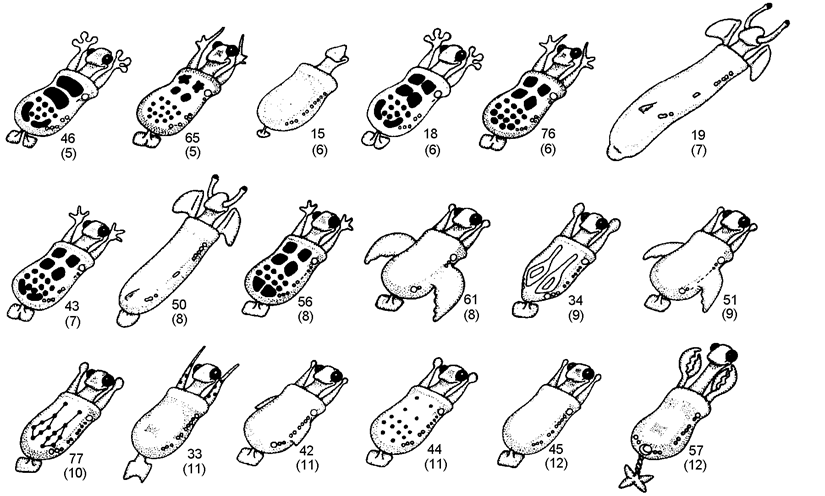The Phylogeny of Caminalcules
Using a large sheet of paper, construct a phylogenetic tree for the Caminalcules. Use a meter stick to draw 20 equally spaced horizontal line on the paper. Each line will be used to indicate an interval of one million years. Label each line so that the one at the bottom of the paper represents an age of 19 million years and the top line represents the present (0 years).
![]()

Cut out all the Caminalcules (including the living species). Put them in piles according to their age (the number in parentheses). Beginning with the oldest fossils, arrange the Caminalcules according to their evolutionary relationship. Figure 4 shows how to get started.
![]()
Hints, Suggestions and Warnings
a. Draw lines faintly in pencil to indicate the path of evolution. Only after your instructor has checked your tree should you glue the figures in place and darken the lines.
 b. Branching should involve only two lines at a time:
b. Branching should involve only two lines at a time:
Like this Not this
c. Some living forms are also found in the fossil record.
d. There are gaps in the fossil record for some lineages. Also, some species went extinct without leaving any descendants (remember the dinosaurs, Fig. 1).
e. The Caminalcules were numbered at random; the numbers provide no clues to evolutionary relationships.
f. There is only one correct phylogenetic tree in this exercise. This is because of the way that Joseph Camin derived his imaginary animals. He started with the most primitive form (#73) and gradually modified it using a process that mimics evolution in real organisms. After you complete your phylogeny compare it with Camin's original.
 LIVING CAMINALCULES
LIVING CAMINALCULES
FOSSIL CAMINALCULES (numbers in parentheses indicate age in millions of years)



Cammanicules Questions
Source: http://www.wuhsd.org/site/handlers/filedownload.ashx?moduleinstanceid=13193&dataid=31526&FileName=Cammanicules%20Evolution.doc
Web site to visit: http://www.wuhsd.org/
Author of the text: not indicated on the source document of the above text
If you are the author of the text above and you not agree to share your knowledge for teaching, research, scholarship (for fair use as indicated in the United States copyrigh low) please send us an e-mail and we will remove your text quickly. Fair use is a limitation and exception to the exclusive right granted by copyright law to the author of a creative work. In United States copyright law, fair use is a doctrine that permits limited use of copyrighted material without acquiring permission from the rights holders. Examples of fair use include commentary, search engines, criticism, news reporting, research, teaching, library archiving and scholarship. It provides for the legal, unlicensed citation or incorporation of copyrighted material in another author's work under a four-factor balancing test. (source: http://en.wikipedia.org/wiki/Fair_use)
The information of medicine and health contained in the site are of a general nature and purpose which is purely informative and for this reason may not replace in any case, the council of a doctor or a qualified entity legally to the profession.
The following texts are the property of their respective authors and we thank them for giving us the opportunity to share for free to students, teachers and users of the Web their texts will used only for illustrative educational and scientific purposes only.
All the information in our site are given for nonprofit educational purposes
The information of medicine and health contained in the site are of a general nature and purpose which is purely informative and for this reason may not replace in any case, the council of a doctor or a qualified entity legally to the profession.
www.riassuntini.com